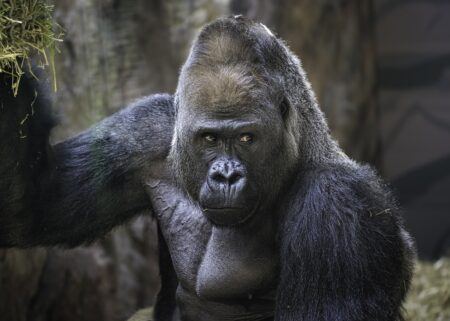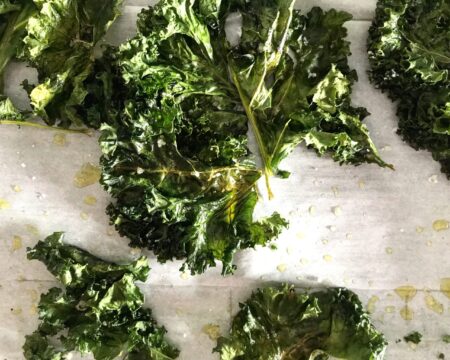Primates are an order of mammals belonging to tropical regions, generally as forest dwellers, surviving in a natural habitat with a different diet and lifestyle. Relatively close contact between humans and non-human primates provides an idea and an opportunity to scientists to understand microbiome and host interactions . The microorganisms inhabiting the gut of a host animal are termed as the ‘gut microbiome’. The gut microbiome of primates can be rewired by changing their lifestyle, diet, habitat, and cohabitants among other factors [1].
The gut microbiome plays a pivotal role in maintaining health and development, enhancement of immune functioning, general behaviour, as well as protecting the host from pathogenic invasions. The present blog summarizes the importance, and the factors influencing the gut microbiome in primates. The approaches towards uncovering the microbial genes that are present and expressed in primate gut under different conditions are also elaborated. BaseClear, as an expert in the applications of microbial genomics has recently partnered with Micropia ARTIS on the ‘primates rewilding’ project. BaseClear led the genomics perspective of the project in understanding and identifying the primate gut microbiome, carbohydrate pathway analysis and link to high fibre natural diet (hardwood), gut-brain axis in primates. Exploring the gut microbiome of animals in their natural habitat to an industrial habitat can shed light on the discovery of novel genes, enzymes, and biomarkers.
 Primates Rewilding Project
Primates Rewilding Project
Lifestyle and diet are crucial factors of the gut microbiome. In a recent study, Professor. Remco Kort, ARTIS Micropia, examined the factors influencing gut microbiome diversity of primates [2]. The gut microbial composition was influenced by diet, lifestyle and the impact of relocating a primate from the wild into the zoo (captivity), from one zoo to another, etc [3]. Interestingly, the study also showed that the gut microbial profiles of a captive gorilla mirrored the gut microbial profiles of humans, indicating the influence of ‘human exposure’ on primate’s native gut microbiome. Primates in their natural habitats e.g. in African forests munch on twigs, wood, bark, and branches as their dietary habit. Thus, the gut microbial footprint predominates microbes that aid digestion of carbohydrate-rich fibre with potentially higher cellulase enzyme activity. Despite mimicking a high fibre balanced diet, surprisingly the captive gorilla was discovered to have different gut microbial diversity than in its natural habitat.
Prof. Kort – ARTIS Micropia and Vrij University, and the BaseClear team led by Dr. Walter Pirovano – Innovation Manager, Mark Bessem – Manager Bioinformatics, and Dr. Radhika Bongoni – Commercial Director partnered on the ‘Primate Rewilding Project’. The project aimed at understanding the effect of (a high fibre, wood-rich) diet on the gut microbiome and carbohydrate metabolism in a male captive gorilla. In this regard, BaseClear was involved in the study design, sampling collection, and analysis of the samples. A standard primate gut microbiome database was built by Bessem’s team of bioinformaticians , and functional metagenome analysis was performed . Literature lacks meaningful database of primate gut microbial genomics, adding bioinformatics challenges to the project. The dedicated database built by BaseClear based on VU database, aided in not only having higher taxonomic classification, making the most of the sequencing data and also in exploring advanced downstream work such as pathway analysis. In this case, carbohydrate metabolism and cellulose digestion. [4]
“Upon analysing the gorilla faecal samples via shotgun metagenomics taxonomic and functional profiling, it was discovered that a class of fungi were the main contributors towards CAZymes in the dataset. Fungi secrete the carbohydrate (cellulose) digesting CAZymes that enable them to digest the plant cell wall material rich in lignin and cellulases. The fungal community together with the bacterial community were found to influence the carbohydrate metabolic pathways. Differences in the CAZymes in faecal samples collected with and without cellulase rich diet potentially sheds some light in the wild and captive lifestyle of animals. Together with Remco and Isabele, we are in fact drafting a manuscript for publication on these findings ” says Bessem. “For us, it was not only interesting to link between microbial classes and enzymes but we were also excited to see the links between diet and host-microbe interactions”, says Bongoni.
 Approaches to analysis
Approaches to analysis
To understand the gut microbiome profiles of the primate, 16s amplicon profiling was conducted on the gorilla faecal samples. Discovering the similarity of gut microbial profiles between captive gorillas to human gut microbial diversity, the project switched to shotgun metagenomics of the samples undergoing dietary intervention of gorillas. “Metatranscriptomics approach if successful would shed light on the expressed genes, i.e., in CHO metabolic pathways and comparisons between samples [5].
The technique enables the characterization of active microbial communities & genes, thus examining host-microbial interactions and differential gene expressions. Though the metatranscriptomics approach was initially chosen for the project, the challenges in the enrichment of RNA were far too high. ‘The success of metatranscriptomics downstream analysis results depends on the quality of rRNA depletions’, says Bessem.
The role of microbiome and gut-brain axis and the welfare of animals
Research on probiotics for animals’ welfare and wellbeing has shown that probiotics can alleviate stress. Thus indicating the alteration of the brain and behaviour of the NHPs (non-human primates).
Changes in environment, cohabitants, stress during transportation, e.g., of chicks or calves or piglets from a hatchery or breeders; or relocation from forest to zoo; or relocation from one zoo to another etc. can induce stress in an animal, which in turn can impact gut microbiome and the wellbeing of the animal. Depression, paired with aggressiveness, stress, mood swings and increased anxiety are few symptoms. Some studies showed the role of yeast and bacterial probiotics could alleviate the stress and thus improve the mental health of an animal [6]. Bessem also highlights that the use of antibiotics in a gorilla seemed to sicken the animal and the gut microbiome changes.
“We often work on projects to examine the impact of antibiotics, antibiotic alternatives and combination products on the performance of animals such as poultry, swine, or fish. We run our robust shotgun metagenomics as well as antimicrobial resistance analysis pipelines (Resistome analysis and MDRO analysis) for such projects. We are proud to be contributing to the sustainable farming projects” says Bongoni [7]
 Conclusion
Conclusion
The influence of diet, lifestyles, environment and obvious genetics have a huge role in the health of the animal. With advanced technologies and platforms, BaseClear is able to take up supporting novel discoveries for their clients. The discovery of biomarkers such as enzymes, genes, and pathways contribute towards understanding the mode & mechanism of action and precision medicine.
References
- Remco Kort, Artis micropia, lifestyle influences microbiome https://www.micropia.nl/en/discover/stories/lifestyle-influences-microbiome.
- Remco Kort, Artis micropia,lifestyle influences microbiome https://www.micropia.nl/en/discover/stories/lifestyle-influences-microbiome.
- Ross, S.R., Wagner, K.E., Schapiro, S.J. et al.Transfer and Acclimatization Effects on the Behavior of Two Species of African Great Ape (Pan troglodytes and Gorilla gorilla gorilla) Moved to a Novel and Naturalistic Zoo Environment. Int J Primatol 32, 99–117 (2011). https://doi.org/10.1007/s10764-010-9441-3 Published on 30 september 2010.
- Andres G, Klara P,Carl J. Yeoman, .et al. Gut microbiome composition and metabolomics profiles of wild Western of lowlands gorillas (Gorilla gorilla gorilla) reflect host ecology. First published – 06 April 2015. https://doi.org/10.1111/mec.13181
- https://www.baseclear.com/genomics/metatranscriptomics
- Partrick, K.A., Rosenhauer, A.M., Auger, J. et al. Ingestion of probiotic (Lactobacillus helveticus and Bifidobacterium longum) alters intestinal microbial structure and behavioral expression following social defeat stress. Sci Rep 11, 3763 (2021). https://doi.org/10.1038/s41598-021-83284-z
- https://www.baseclear.com/animal-health-performance/antimicrobial-resistance-and-the-%20%20microbiome/
Related items

 Primates Rewilding Project
Primates Rewilding Project Approaches to analysis
Approaches to analysis Conclusion
Conclusion

